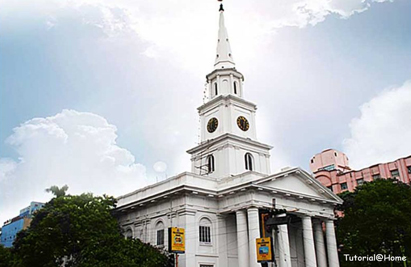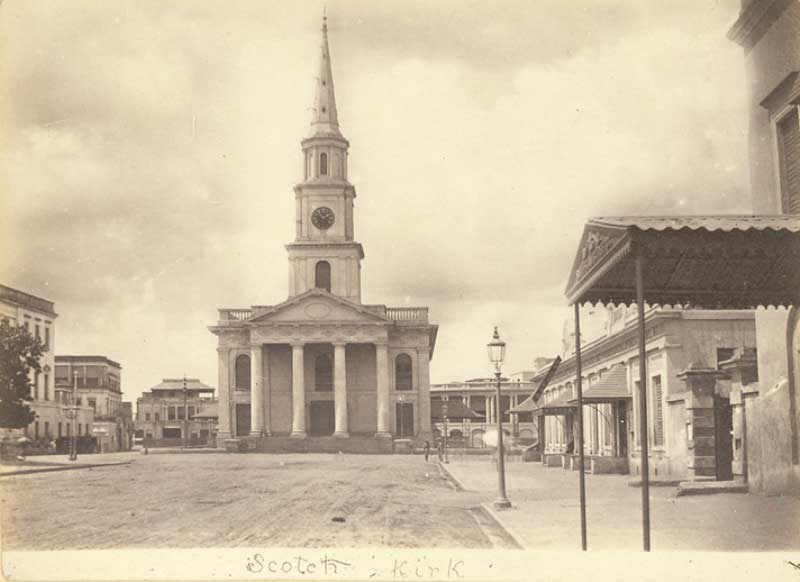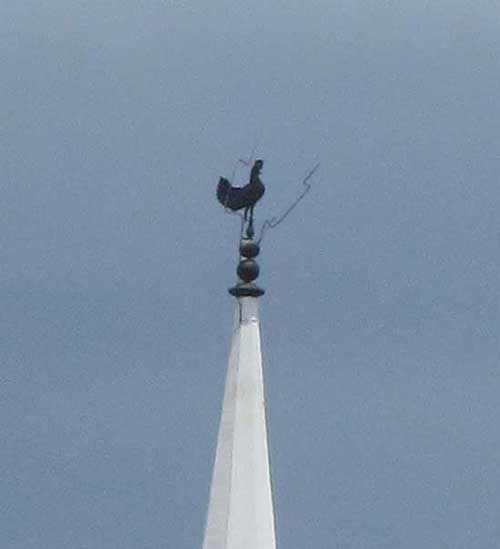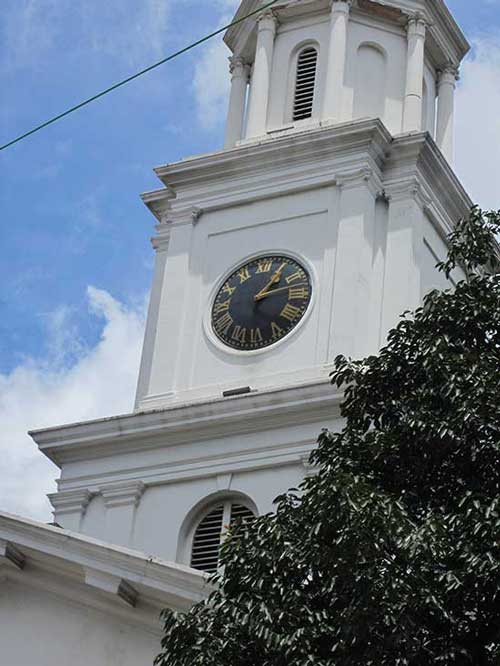
St. Andrew’s Church, situated at the North Eastern side of the Writers’ Building, was basically built to serve the Scottish Presbyterian community of Calcutta. Located on 2/2, Council House Street, it stands on the same site, which was once occupied by the Old Court House. Before the erection of the old Court House in the 1730s, the site was a piece of waste jungle land on the fringe of a dense forest. The old Court House had been the scene of many spectacular trials, including that of Maharaja Nandakumar, who was tried and sentenced to death in 1775. Within twenty years of the incident, the Court building became dilapidated and unsafe due to negligence and lack of proper maintenance and was demolished in 1792.


The Anglo-Indian Presbytery and the Anglo India Episcopate was created by the Charter of 1813 and the Rev. Dr. James Bryce arrived in Calcutta on 28th November 1814, to take the charge of the Chaplain at the Bengal Ecclesiastical Establishment.
Interestingly, the appointment of Dr. Bryce was recommended to the Court of Directors by the fact of his having gained the prize, offered by Dr Claudius Buchanan to members of the University of Aberdeen, for an essay on the best means of evangelizing India.However, from the very beginning, he had to face a positional rivalry with Bishop Thomas Fanshawe Middleton, the first Bishop of the Indian Episcopate, as well as the head of the Anglican St. John’s Church located near the Government House.


Otherwise known as the Kirk, St Andrew's Church is the only Scottish church in Calcutta. Marquis of Hastings, the then Governor General of India, laid its foundation stone on 30 November 1815 and the function was attended by the Countess of Moira and the Countess of Loudon.
Like the St. John’s Church of Calcutta, St. Andrew’s church was also modelled like the St. Martin’s in the fields, London. The construction of the church was duly completed in 1818, under the supervision of Messrs Burns, Currie and Co and it was dedicated on Sunday, the 18 March 1818.The locals, in those days used to call it ‘Lat Sahib ka Girja’, as its foundation stone was laid by the Governor General.


There was a controversy regarding the erection of the spire of the newly constructed church. Bishop Middleton opposed the idea, as he was convinced that the spire was the exclusive right of the Church of England. But, Reverend Bryce, the priest of the church disagreed and declared that he would build a spire for the Kirk that would be high above the steeple of St John’s Cathedral and crown it with a weather-cock to crow over the Bishop. In the end, Bryce won the battle and he was able to get the necessary permission for a higher steeple. disagreed and declared that he would build a spire for the Kirk that would be high above the steeple of St John’s Cathedral and crown it with a weather-cock to crow over the Bishop. In the end, Bryce won the battle and he was able to get the necessary permission for a higher steeple.


Standing beside the Writers’ Building and facing the long stretch of Old Court House Street, St. Andrew’s Church, with its imposing Grecian façade is mostly engulfed by heavy traffic during the busy hours. The large square structure of the building is erected on a high plinth with a massive pediment, supported on tall Doric pillars. It also consists of an elegant portico in the front with a high spire, crowned with a black weather cock. The clock was fitted to the tower in 1835.The interior of the majestic Church is however, very simple. Numerous stone tablets adorn the walls and commemorate the Scotsmen who passed away in India, thousands of miles away from their home and were buried in the Scottish cemetery of a distant country, which falls under the supervision of the church.
